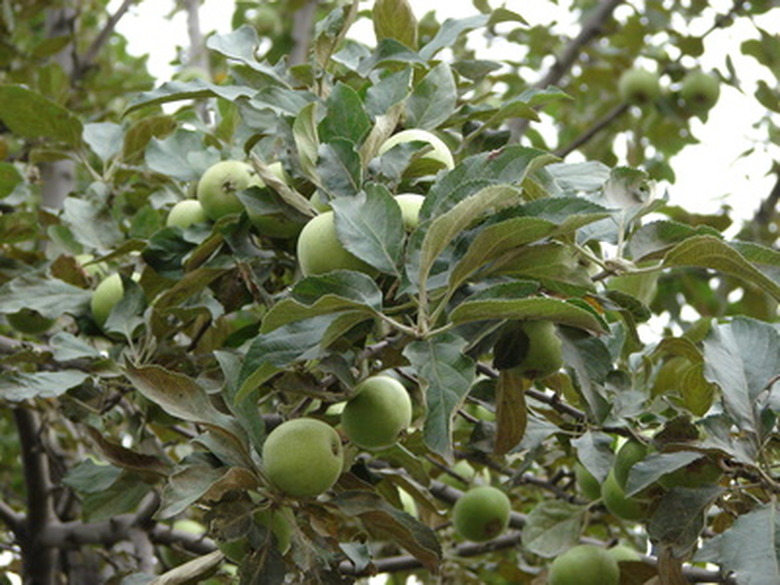How To Grow Apple Trees In Maryland
Apple trees can grow in Maryland and are grown by many people and orchards. Maryland averages between 29 million and 35 million lbs. of harvested apples each year of the total 95 billion lbs. grown in the United States.The coastal and Chesapeake Bay areas of Maryland are beautiful farm areas where apple trees grow easily. The western mountainous part of the state is expanding its apple tree count by using programs like the Maryland Correctional Enterprises' work crews to plant sustainable crops and trees.
Step 1
Plant at least two trees for pollination. Apple trees are usually self-unfruitful and need the pollen of a neighboring tree. Make sure that you plant the trees close enough that meandering bees will visit both trees before flying off. The apple varieties do not need to be the same. In fact, you can use a crab apple tree for pollen. The only time you might be concerned about the outcome of pollen combinations is when you are saving the seeds for propagation.
- Apple trees can grow in Maryland and are grown by many people and orchards.
- The western mountainous part of the state is expanding its apple tree count by using programs like the Maryland Correctional Enterprises' work crews to plant sustainable crops and trees.
Step 2
Provide a way to get the pollen from one tree to another by encouraging bees to visit your yard. According to studies done by Dr. Hachiro Shimanuki, head of the USDA's Bee Research Laboratory in Beltsville, Maryland, there has been a 25 percent decline in managed honeybees in the last decade. You can provide a dry sunny area free of pesticides where the bees can nest, preferably close to a source of water.
Step 3
Fertilize your apple tree if it needs it. The cooperative extension at the University of Maryland advises using a balanced fertilizer only if the tree has not produced 12 to 18 inches of growth during the previous year. Apply it in early spring and about 12 inches out from the trunk of the tree, following the manufacturer's directions for application.
Step 4
Prevent insect infestation like the codling moth, which is a common threat to Maryland orchards, by providing cardboard collars for the moths to nest in as they travel down the trunk of the apple tree. This cardboard can removed and destroyed. Hang red glue traps (available at most garden centers) for the moths and plant wildflowers to bring in predatory insects that will control your pests naturally.
- Provide a way to get the pollen from one tree to another by encouraging bees to visit your yard.
- Prevent insect infestation like the codling moth, which is a common threat to Maryland orchards, by providing cardboard collars for the moths to nest in as they travel down the trunk of the apple tree.
Step 5
Prune your trees before the trees start budding out in late February or early March. Maryland is notorious for having heavy snow fall that weighs down branches and snaps long or weak branches. Keep your trees pruned of dead growth and keep the branches short to encourage new growth. Cut out sprouts that grow straight up but never produce fruit.
Things Needed
- Pruning shears
- Insecticide
- Fertilizer
